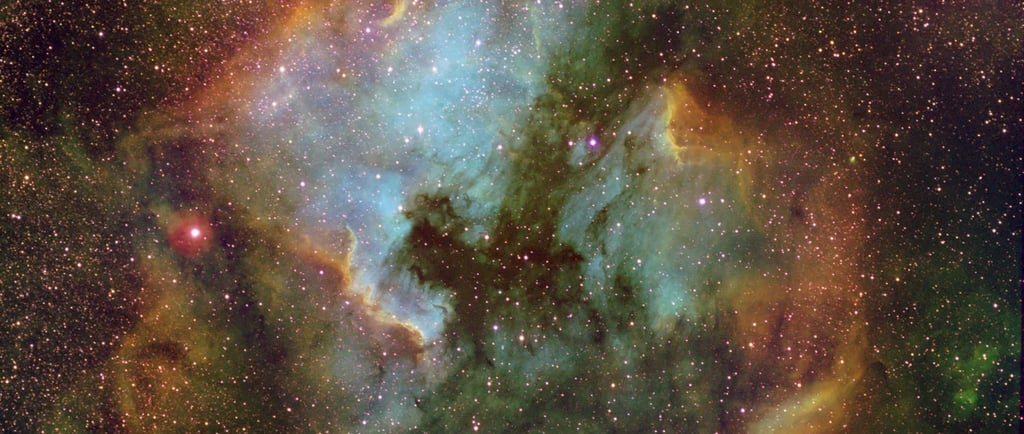NGC 7000: The North America Nebula


The NGC 7000
In the vast expanse of the cosmos, emission nebulae serve as a breathtaking testament to the ongoing processes of star formation and cosmic evolution. One of the most striking examples is NGC 7000, commonly known as the North America Nebula. This celestial body is located in the constellation Cygnus and is approximately 2,200 light-years away from Earth.
What Makes NGC 7000 Unique?
NGC 7000 gets its name due to its striking resemblance to the geographical outline of North America when observed through telescopes. This nebula is not only visually stunning; it also plays a crucial role in the star formation process. The nebula's bright emissions are a result of ionized hydrogen gas, which glows when exposed to the ultraviolet light emitted by young, hot stars nestled within and around the nebula.
The North America Nebula is part of a larger molecular cloud that also includes the Pelican Nebula, and the two are often photographed together. This proximity means that they share the same star-forming activity, providing astronomers with a rich field for study.
The Science Behind Emission Nebulae
The gas and dust found within NGC 7000 provide a haven for new stars to be born. This occurs when dense regions of the molecular cloud collapse under their own gravity, leading to the formation of protostars. These nascent stars emit tremendous energy, which heats the surrounding gas and causes it to glow brightly, as we see with NGC 7000.
Observations of this nebula reveal a variety of phenomena related to stellar evolution. As new stars emerge, they contribute to the re-energizing of surrounding gas through stellar winds and radiation. This interactive dynamic not only drives the beauty of emission nebulae but also enriches the interstellar medium with heavier elements, making it an essential component of the galaxy's lifecycle.
A Gateway to Understanding the Universe
NGC 7000, the North America Nebula, offers both amateur and professional astronomers a captivating view into the processes that define our universe. Its distance of 2,200 light-years places it in a region rich with astrophysical activity. As we continue to explore the cosmos, studies focused on nebulae like NGC 7000 shed light on the complex tapestry of star formation and the ongoing evolution of galaxies.
In summary, the North America Nebula stands as a testament to the wonders of the universe, illustrating the balance of creation and destruction inherent in stellar life. By observing and understanding such nebulae, we gain deeper insights into the nature of the cosmos and our place within it.
